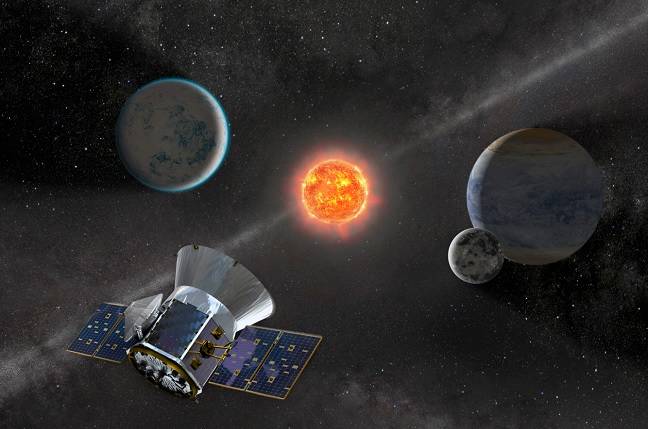
The space telescope launched last year as the successor to NASA's long-running and very successful Kepler turned in three exoplanets in its first three months of observations.
In spite of the US government shutdown, NASA found someone to press the "publish" dialogue on its website and announced the finds on Monday.
Perhaps more impressive than the three finds is this detail: astronomers are already conducting ground-based observations to try to validate more than 280 further exoplanet candidates.
The three confirmed exoplanets are designated Pi Mensae c, LHS 3884b, and HD 21749b. The last of these three has astroboffins excited because while it's too hot for life at 150°C (300°F), it could either be a water planet or be home to what Hubble Fellow Diana Dragomir called a "substantial atmosphere".
HD 21749b also has the longest orbital period of any exoplanet found within 100 light years of us (36 days), is about three times Earth's size but 23 times its mass – and, perhaps surprisingly, it's considered almost chilly, as exoplanets go.
Dragomir said: "It has the coolest surface temperature of a transiting exoplanet around a star brighter than 10th magnitude, or about 25 times fainter than the limit of unaided human vision."
NASA's announcement added that the TESS data has yet-to-be-confirmed hints that there could be a second candidate planet in the HD 21749 system.
Pi Mensae c is the second planet found orbiting its star, and has a period of six days. Pi Mensae is similar in mass and size to our Sun, about 60 light years distant, and visible to the naked eye in the southern Mensa constellation.
NASA said the other find, LHS 3884b, is around 1.3 times Earth's size, and every 11 hours orbits a cool M-type dwarf star around 49 light years away. It's so close to its sun that some of its rocky surface could be molten lava during daytime.
The data that yielded the finds was collected between 25 July and 22 August last year by the space telescope's four cameras.
TESS was launched into orbit last April on a SpaceX Falcon 9, and in May, a manoeuvre around the Moon gave it the gravity assist needed to settle down into its eccentric, elliptical orbit (perigee is 108,000km, apogee is 373,000km).
The orbit puts TESS well clear of the cluttered geosynchronous orbit, and also lifts it clear of the Van Allen radiation belts. ®
Read Again What's 23 times the size of Earth, uncomfortably warm and has astroboffins excited? - The Register : http://bit.ly/2sdu3Jc
Bagikan Berita Ini















0 Response to "What's 23 times the size of Earth uncomfortably warm and has astroboffins excited? - The Register"
Post a Comment